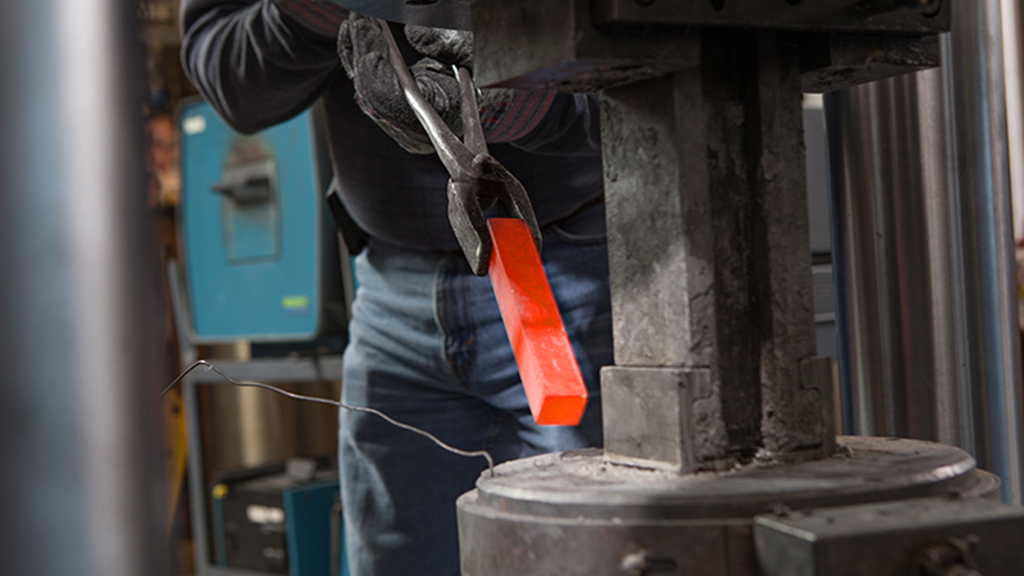
In a collaborative study involving Equal Channel Angular Extrusion (ECAE), a unique severe plastic deformation (SPD) process, researchers Dr. Ibrahim Karaman from Texas A&M University and Drs. Don Susan and Andrew Kustas of Sandia National Laboratories were able to improve the mechanical properties of magnetic alloys without changing their magnetic properties through microstructural refinement. This process has proven to be troublesome in the past.
Production of high-performance magnetic alloys and other intermetallics could prove particularly useful in aerospace and space exploration where materials must endure harsh environments including temperature extremes, shock, and vibration.
ECAE forces a bar of metallic or polymeric material at a 90-degree angle through a die channel. This process induces SPD without any changes in the cross-sectional area of the sample.
Originally the researchers at Sandia National Laboratories and Texas A&M worked together on a different topic involving shape memory alloys. They quickly realized the potential in combining the strengths of their respective facilities on an entirely new study and subsequently applied the experiences to magnetic alloys.
Sandia saw the need to manufacture magnetic alloys in bulk demonstrating superior mechanical properties. Because ECAE allows the microstructure of materials to be drastically altered without affecting its cross-sectional area, larger samples with dimensions greater than one inch could be produced while improving mechanical properties simultaneously.
“I was initially skeptical about increasing the strength of the particular materials while keeping the magnetic properties unaffected,” said Dr. Ibrahim Karaman, department head of the Department of Materials Science and Engineering at Texas A&M. “However, through collaboration with Sandia scientists, we were able to achieve what we dreamed of and that lead to a patent application for ECAE-processed soft magnetic alloys.”
Researchers at Texas A&M carried out the ECAE processing and some microstructural characterization and mechanical testing. Sandia took these findings and administered further microstructural and mechanical characterization and magnetic properties testing.
“ECAE process has been a key element of Texas A&M material processing research in the last two decades and we applied this technique to many unconventional materials with success,” said Karaman.
“ECAE has traditionally been applied to common materials such as aluminum, copper, or steel,” said Dr. Don Susan, principal member of technical staff at Sandia, who added that these materials were malleable and readily manipulated taking the shape of the die with ease. “This work was groundbreaking because it attempted ECAE on a brittle intermetallic alloy.”
Conventionally a cold temperature process, the team had to experiment with high temperature ECAE that had not been extensively explored in magnetic alloys.
“Sandia scientists wanted to apply ECAE to magnetic alloys with low strength and extreme brittleness such as Fe-Co-V,” said Karaman.
As a result, their work was able to show ECAE can be done in extreme processing conditions producing high-performance alloys that can withstand demanding mechanical environments.
“We think there may be opportunities to apply ECAE to other intermetallic alloys, such as Fe-Si or Ni-Ti, to refine their microstructures and improve properties as well,” said Susan. “These experiments have opened the door for further studies in the field.”
“Now Sandia is pursuing a scale-up of the process with a spin-off company from Texas A&M to check the industrial scale magnetic and mechanical properties of these magnetic alloys,” said Karaman. “It’s exciting for us to see the fruit of our joint collaboration.”
The findings are electronically published on Cambridge Core in Journal of Materials Research by the Cambridge University Press.